November 2, 2022
This story was originally published by St. Stephens Indian Mission Foundation in VOL. XXXI APR/MAY/JUN 2001 NO. 2. St. Stephens Indian Mission Foundation owns the copyright, and the story is reprinted here with permission from the Foundation. More information on the Foundation can be found following the story or by clicking on the link above.
Over the centuries, various species of wildlife have shared this region with humankind and were key figures in their lives. For tribes inhabiting the Northwest, salmon were of great importance. Here, in the Rocky Mountains, the small band of Sheepeater Indians was as isolated as the Big Horn sheep they depended upon as their commissary. But the buffalo, by its sheer numbers and the vast amount of country over which it roamed, affected the lifestyle of the greatest number of people.
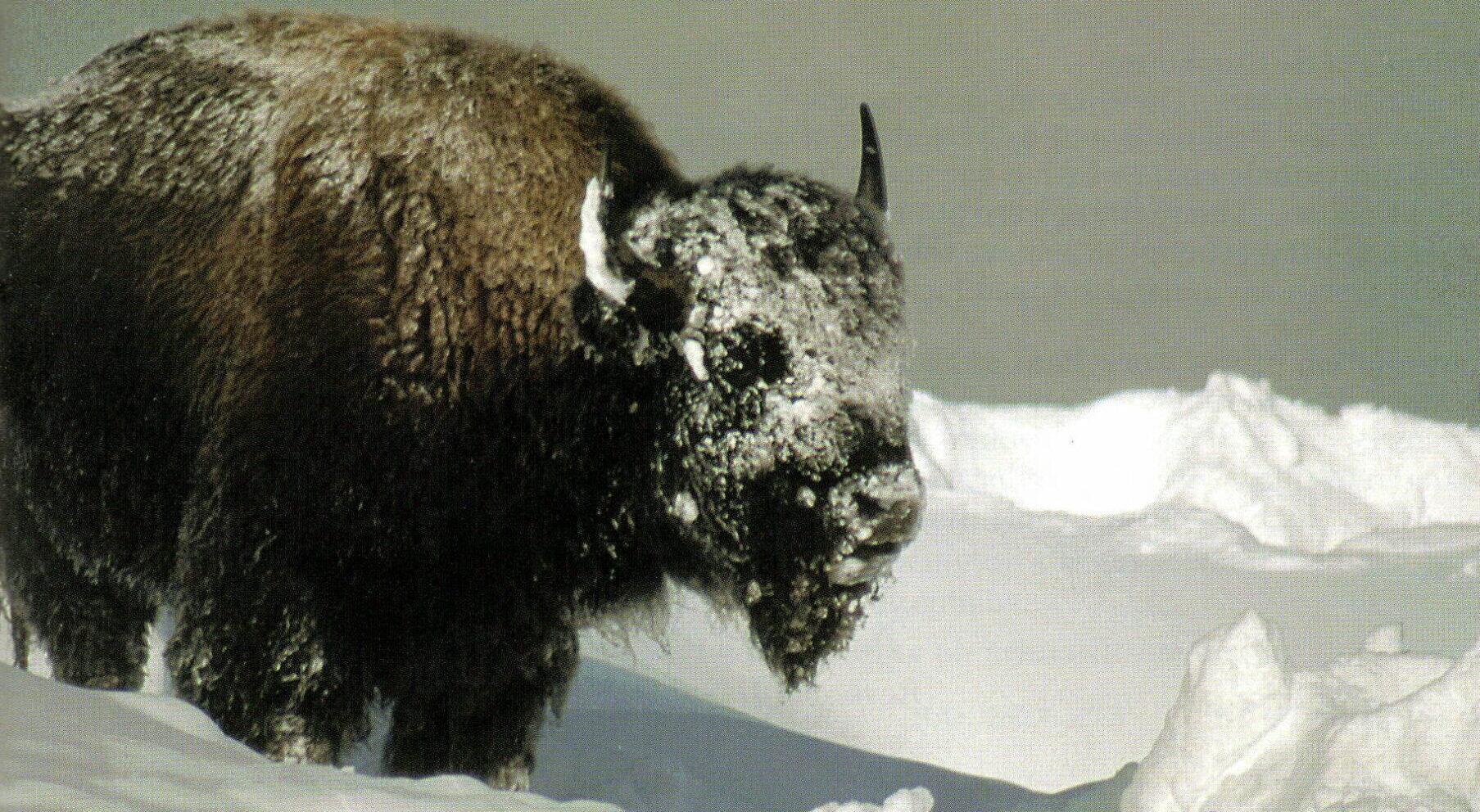
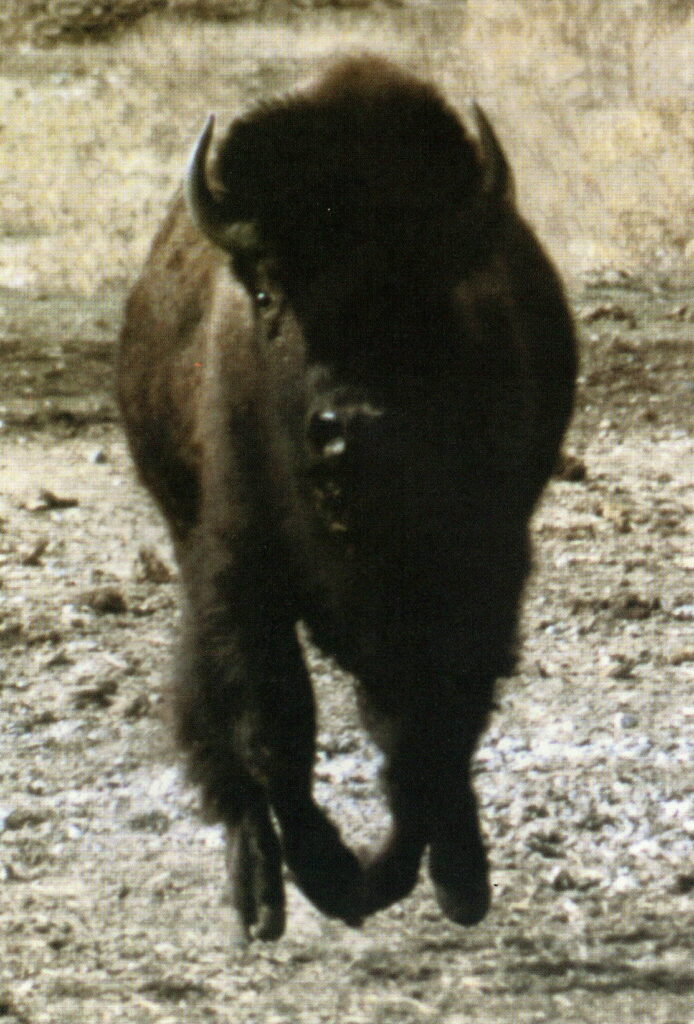

There are numerous things about this big, shaggy animal that are intriguing, including its name. Many discussions have developed around the question: “Is it a bison or a buffalo?” There seem to be various stories about how the North American bison came to be called a buffalo. The scientific word clarifies the difference by saying the term, “buffalo,” refers to the water buffalo of Africa and Asia, which is unrelated to the American bison that are linked to the European wisent. In America the terms “bison” and “buffalo” are customarily interchangeable in usage.
The American bison of today have evolved over the thousands of years since the species first migrated onto this continent. In 1521, members of the expedition led by the Spanish explorer, Cortes, were the first Europeans to record seeing the North American bison. It seems this first observation was not on the open plains, but in a collection of wild animals the Aztec emperor Montezuma had assembled near the present site of Mexico City. The Spanish historian, De Solis described this unique “cow” type animal as having: “…a hump on its back like a camel, a mane with flanks bare and a tufted tail like that of a lion, a goat’s beard, head horned like a bull and cloven hoofs.”
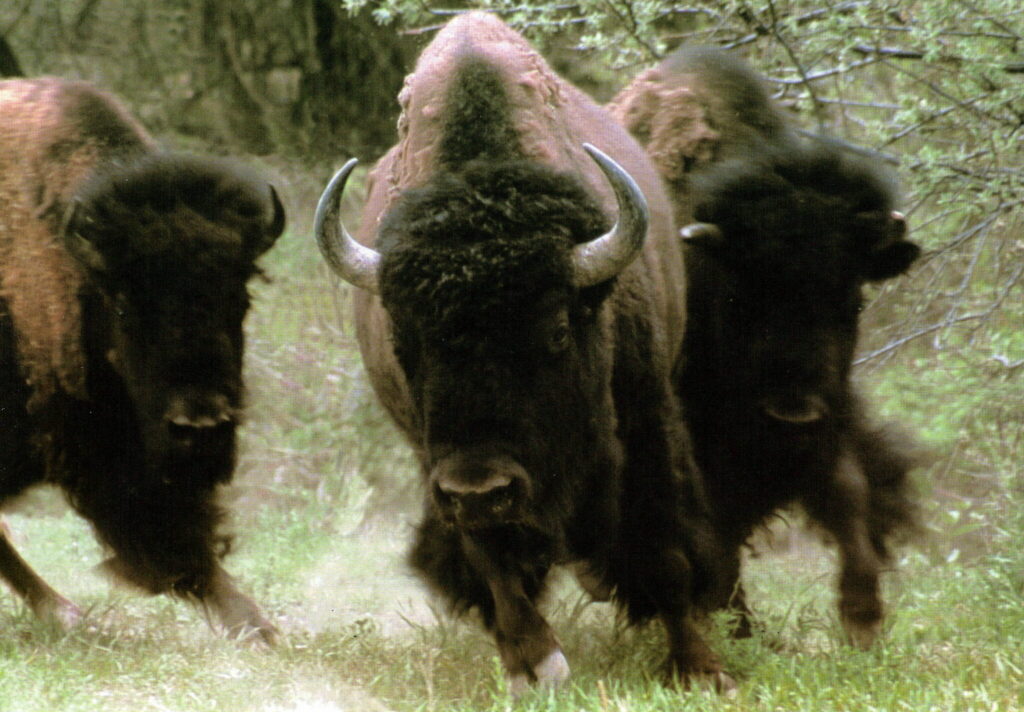
Even today, first impressions vary at the sight of a mature buffalo. Initially it is the size and apparent strength of the animal that stands out. Bulls are larger than cows with much heavier heads and horns. A mature bull can be over 6 feet tall at the top of its hump, up to 12 feet in length and weigh over a ton. The buffalo appears to be top heavy with its head and neck extending from below the top of its hump. The deep chest and brisket make its front legs look even shorter and stubbier than they are. Part of that deception comes from the long flowing chaps that extend down the front legs and are an extension of the mane that covers the hump and front shoulders. The back portion looks as if it could be from a different animal.
In summer, after they have shed and new hair growth begins, the difference in the length of the hair between the front and back is much more evident. The hair is shorter behind the hump over the midsection and back to the tail. The tail is relatively short for the size of the body with long hair only at the end. Comparing the front half to that of the rear, it is apparent that the majority of the bulk is up front over those short legs.
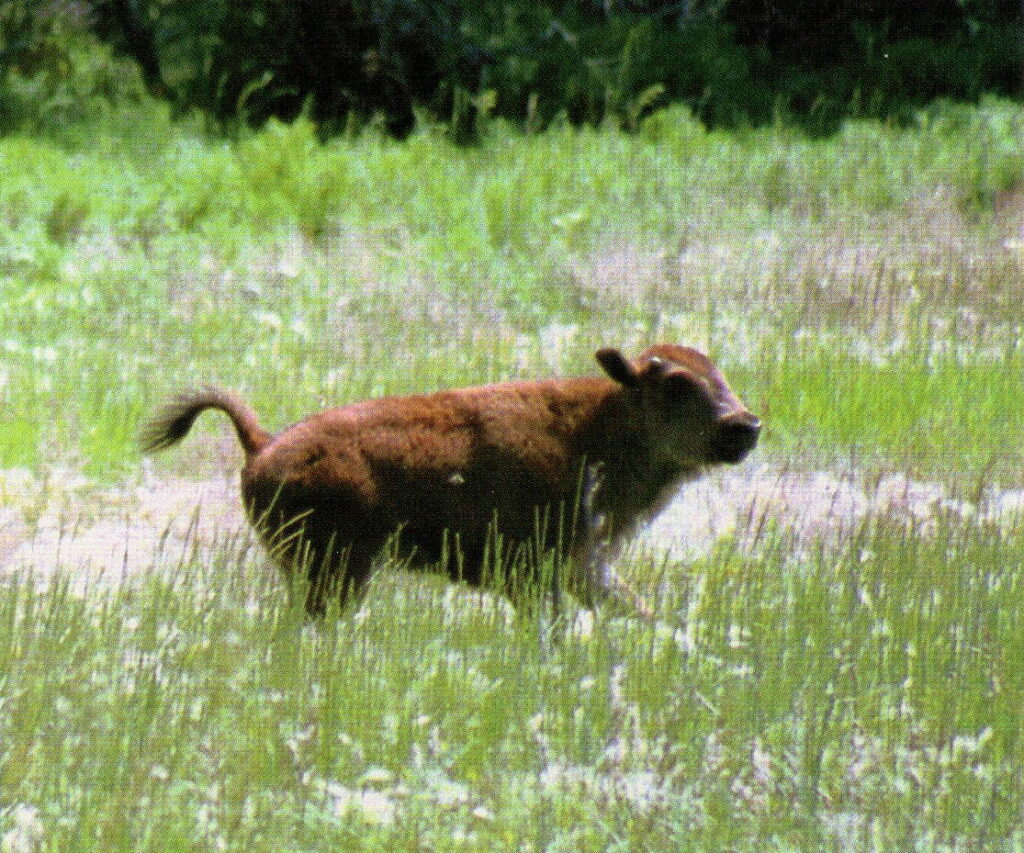
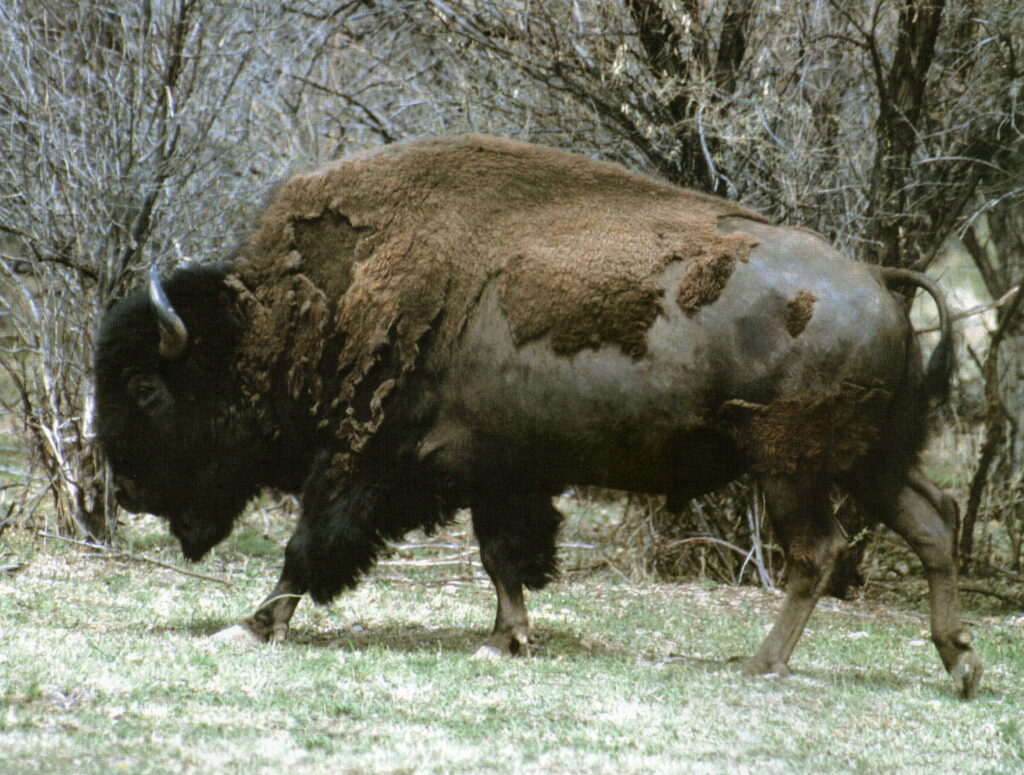
It would appear that buffalo might have trouble jumping over anything. But the athletic ability of this massive animal is astonishing. With ease a buffalo can jump any object it can lift its chin over. It is a sight that is hard to believe even when witnessed. The leap happens so fast that you question if you actually saw the buffalo jump. It is one of those events you would like to have on film and replayed in slow motion just to see how the bulk of this animal went over the obstacle with such poise. Moreover, buffalo can turn back, reversing direction in a heartbeat and can reach full speed in a shorter distance than it takes a horse.
Maybe because of its speed and sheer force, nature gave it a visible warning system. When a buffalo is nervous, irritated or excited, it will stick its tail straight in the air. The long hairs at the end of the tail fall over making the whole tail resemble a question mark. The only question being: “Is it just excited or ready to charge?” The answer usually comes fast and hard!
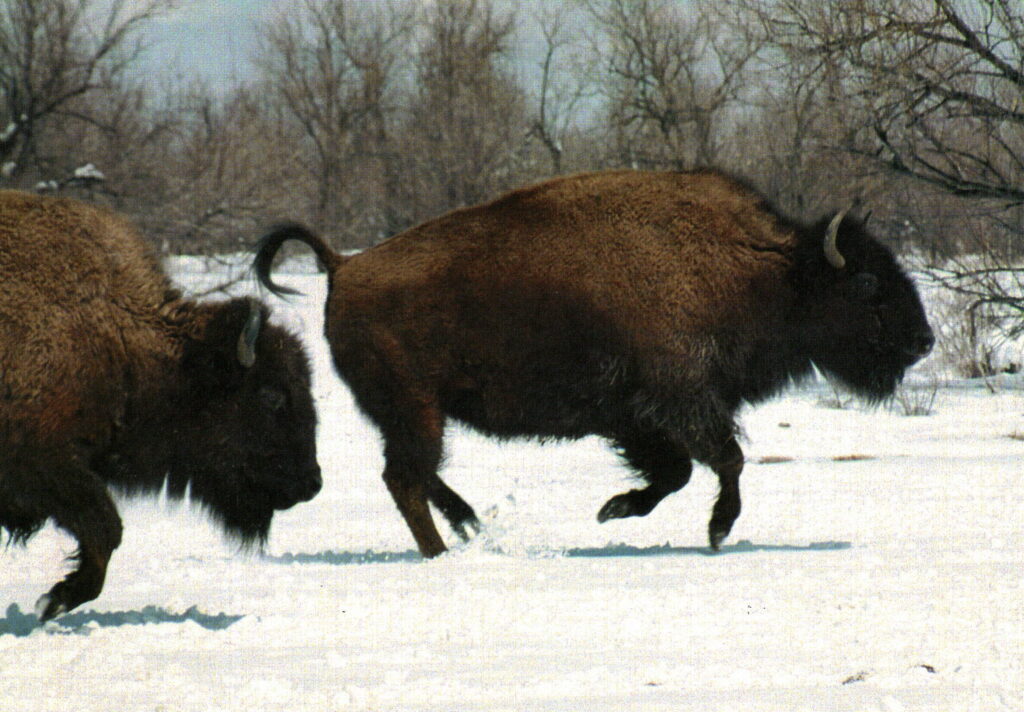
Both sexes have horns that extend from the side of the skull rather than the top like other big game animals. The bulls have a much wider and bigger head with horns that generally turn straight up. The cows seems to have a greater variety of shapes and angles to their horns. Rather than stick straight up above their head they hook inwards toward each other.
With the difference in horn structure their aggressive use of them also varies. Sometimes while feeding, cows will charge other animals in the herd to move them from a desired feeding spot. Or, if another animal gets between a cow and her calf, she will often react by charging. But when they drop their head and charge, contact is made with the curved part of the horn rather than the points. As a result, blunt force is applied with less possibility of physical damage from the sharp points. The force behind a hit like this is more than enough to move the targeted subject. This is not to say that the hooked horns of the cow cannot be used to cause real damage. Defending against predators where the target is often narrower, a cow can hit the target head on and catch it between her two horns. She then swings her head from side to side allowing the pointed tips of both horns to do damage to whatever is caught in between.
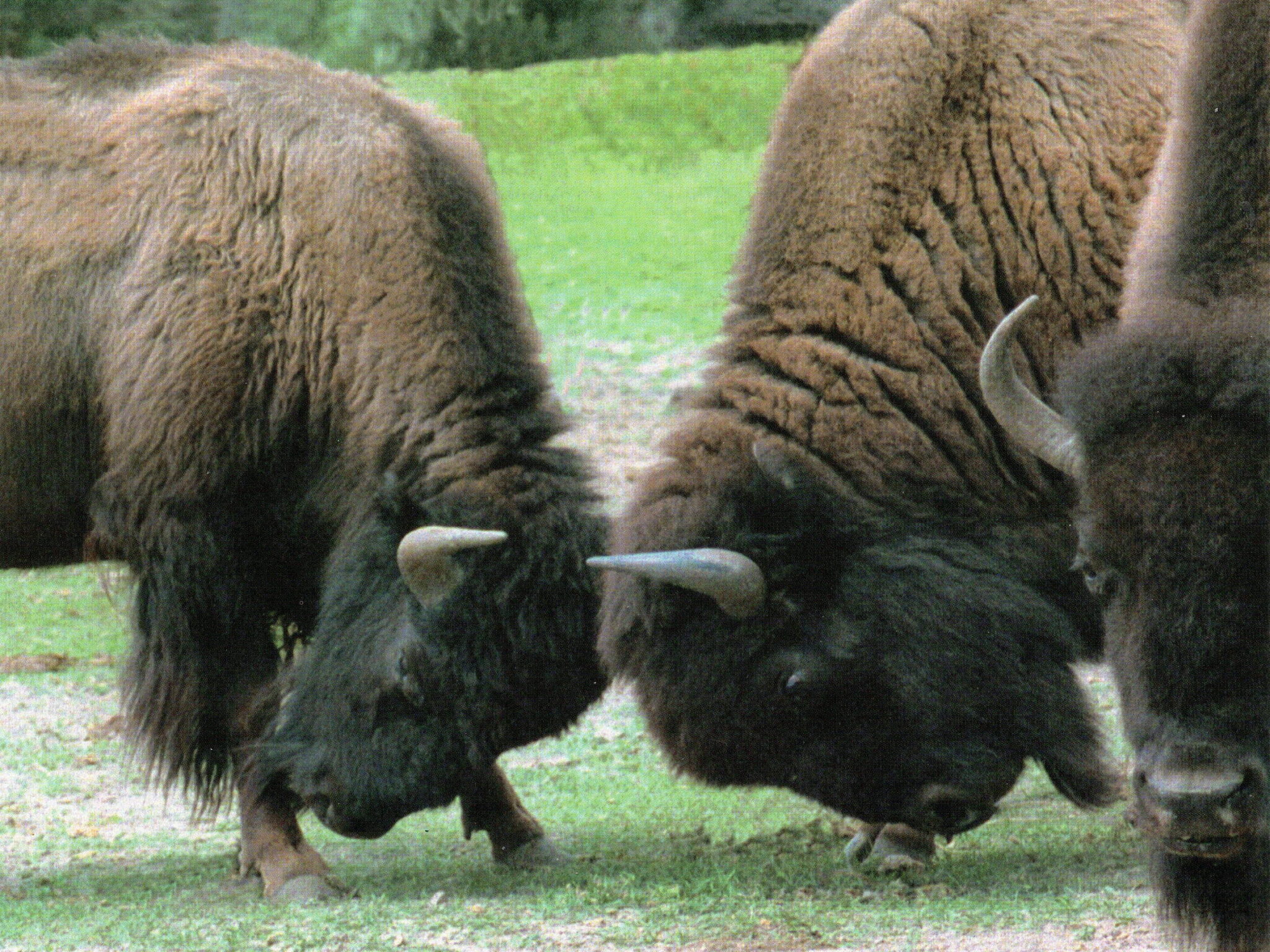
Bulls charge with noses tucked down and horns sticking straight out. This provides more protection for their eyes and the points of the heavy horns make first contact. The hide on the top of the head is very tough and along the back it can be over an inch thick. The aggression shown by bulls is most evident during the rut and breeding season. Two evenly matched males will fight until a dominance is established with the loser pulling away from the herd. Grudges are not held forever. After the breeding season it is not unusual to see the bulls, who had earlier battled, lying together a distance from the herd quietly enjoying the sunshine.
The North American bison are huge, but like many of today’s animals they are smaller than the original animal from which they evolved. Through evolution this massive animal has adapted to the environment and conditions in which it has existed. At first glance a bison seems to be a quite docile beast that slowly grazes from one patch of grass to the next. Because of its size it fears few predators. Humans and wolves may represent its greatest danger, but matched one on one the buffalo still has the advantage. A young, healthy bison is a strong adversary for even a pack of wolves who use numbers and teamwork to bring down an animal. For humans, only the introduction of improved weapons has managed to swing the odds in favor of the hunter. Before firearms, when only spears and then the bow and arrow were used, a successful harvest was not easy or guaranteed. Many brave hunters, like the wolves, were lost in matches with the mighty bison.
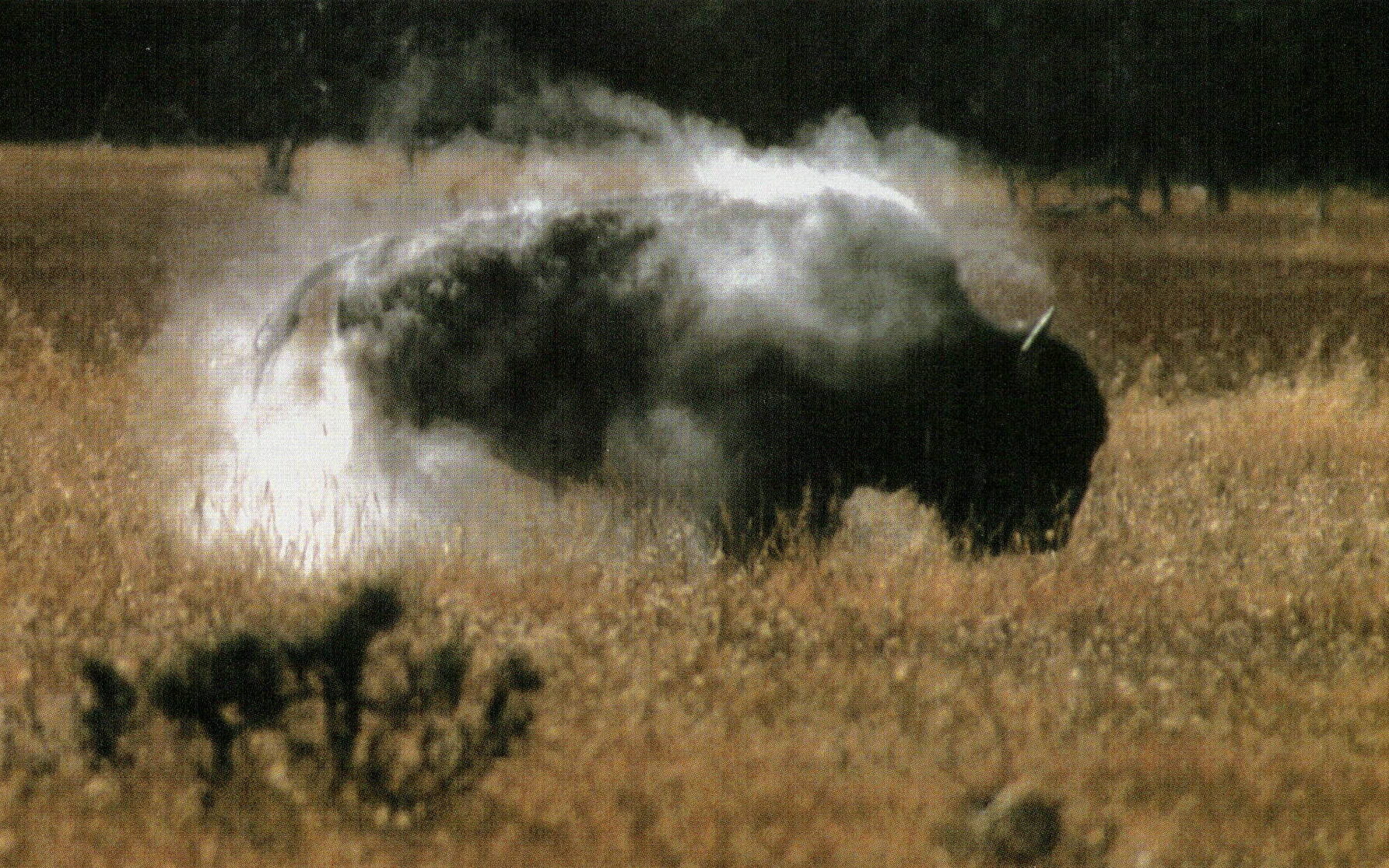
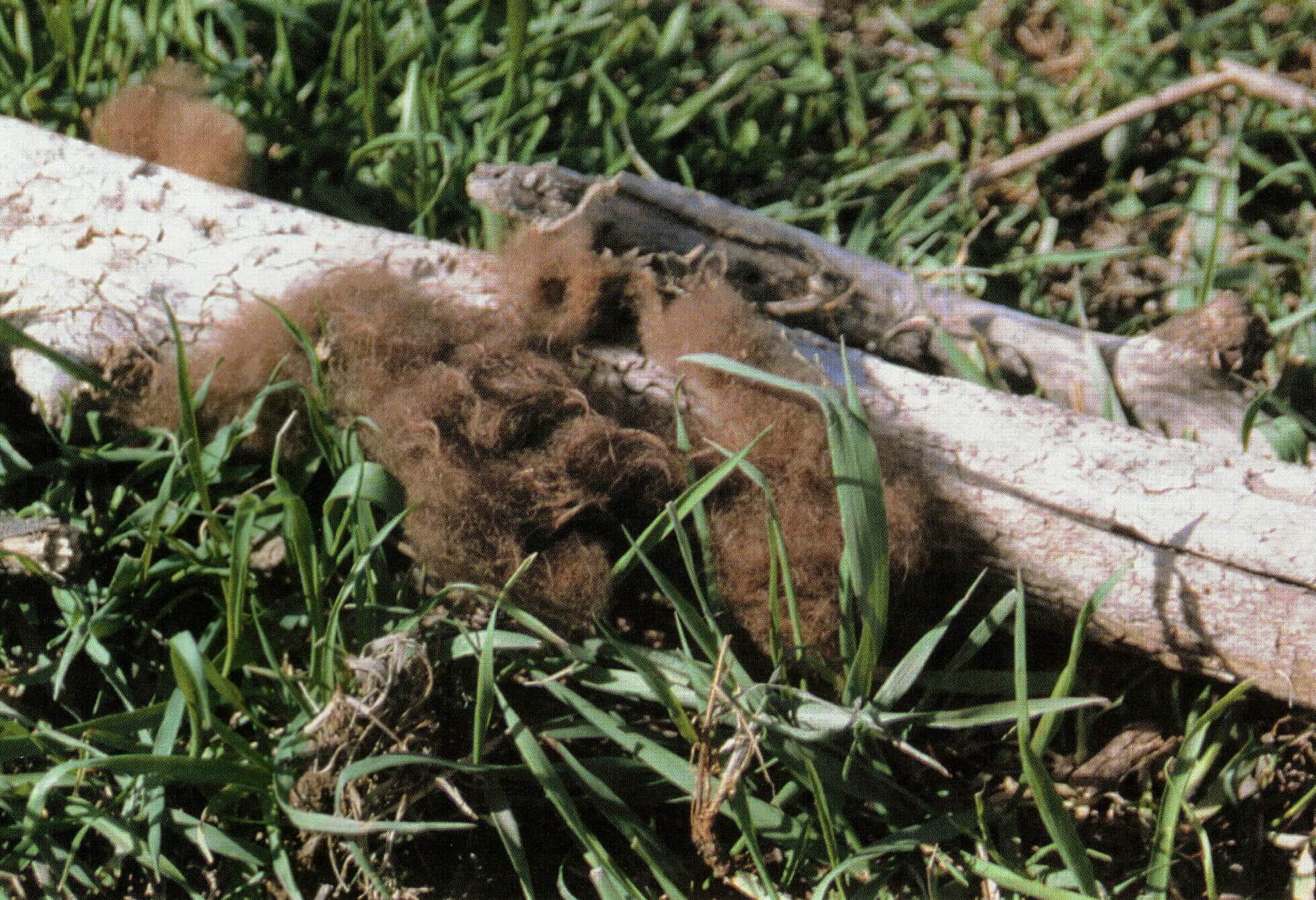
Buffalo are herd animals. A large herd may break up into several small groups, but these groups usually stay fairly close to each other. Despite their size and ability to defend themselves their greatest strength is in numbers. No matter how big the herd, when they are content and relaxing there will be at least one buffalo standing and watching for danger. Sentinel duty changes during the day, but the herd is never without a guard.
When buffalo change their feeding locations they walk in single file. After time they will wear a well-defined path, but it will be only one animal wide. The same holds true at watering spots. They will enter the creek area at one or two locations and not disturb or destroy a large area along the entire creek bank.
Instinctively, these animals are prone to flight rather than aggression. Bison will take any easy avenue of escape from a situation and if one animal breaks and runs, the whole herd will follow. A cow leads the herd, but in a situation where there is an untested route a mature bull will sometimes take the lead. If cornered without an escape route, a cow with her protective instincts will often become the first to face an aggressor.
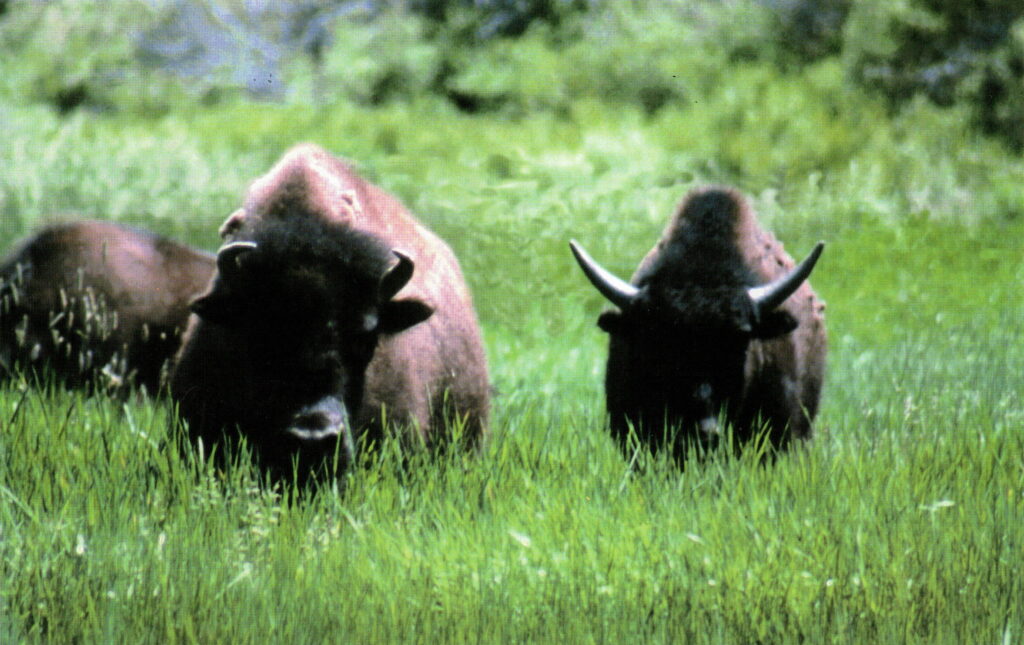
Earliest hunters trying to secure meat for their families learned that bison were keen observers and hard to bring down. The hunters found it nearly impossible to separate bison individually because if one animal broke and ran it set off a stampede of the whole herd. They determined the safest and most efficient method to secure bison meat was to run a herd over a cliff. But even this method was not foolproof or safe. It didn’t take long to realize that these animals could not be herded and a herd would not run blindly over the edge of just any cliff. The hunters built elaborate and well designed wings out from the cliff. The animals were hazed slowly into these driveways. Only near the end would hunters, who had been hidden behind the wings, start a stampede so that the heavy animals pushed those in the lead over the edge.
Early Europeans questioned the method of harvesting an entire herd of buffalo, even if it produced more meat than was needed at the time. However, the necessity of this practice soon became evident when a planned harvest was not completely successful. If an animal broke through a driveline and was later part of another such attempt, it would go for that same escape route usually taking a number of the herd along in its flight. These escapees not only foiled a harvest, but also put the lives of those involved in the drive at a great danger. A single animal breaking through a driveline was one thing, but the next time taking a number of stampeding animals with it could prove extremely dangerous. Life for these people was not easy and the sooner they learned the habits of the animals they depended on for survival, the better their chances.
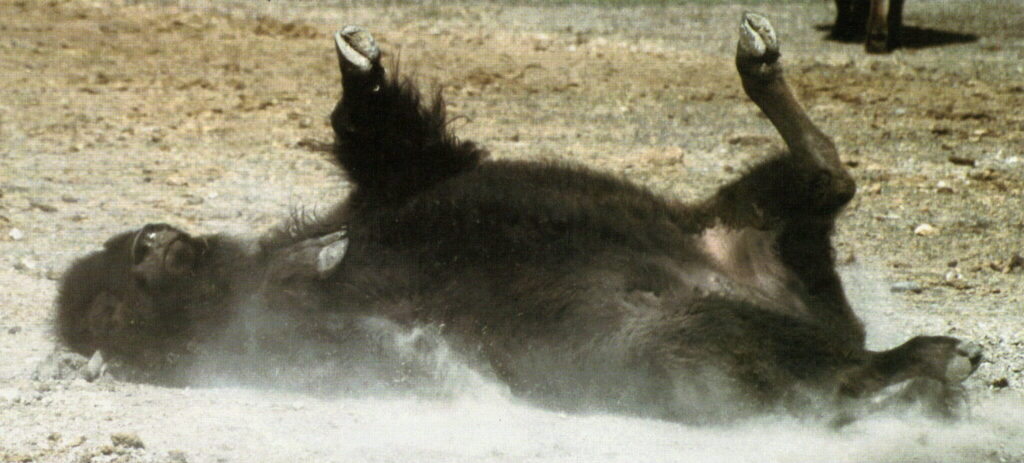
It sounds strange and even stranger to witness, but another agile movement that a buffalo of any age or size demonstrates is to bounce. A change of weather or a move into a new feeding area will often start them running and bouncing, checking out the area before settling down. They appear to have springs on the bottom of all four feet that trigger at the same time producing a stiff-legged bounce similar to that of a deer.
Buffalo make a variety of sounds and the most often heard is the communication between the cows and their calves. Cows are very protective and stay in constant contact with their calves. If a calf strays too far, the mother quickly calls it back. If the calf doesn’t respond either with a return sound or racing back to her side, the mother’s next call is more emphatic. Bulls are often less vocal, but when heard it definitely draws attention. The sound can range from a low growl to a roar. The louder more aggressive sounds are often accompanied by outward demonstrations of aggression – head down, mouth wide open, tongue out, front hooves pawing and tearing up the ground, with the tail straight in the air. This show is often enough to discourage the need of physical aggression. But most generally, sounds made by the herd are simply to keep track of each other.
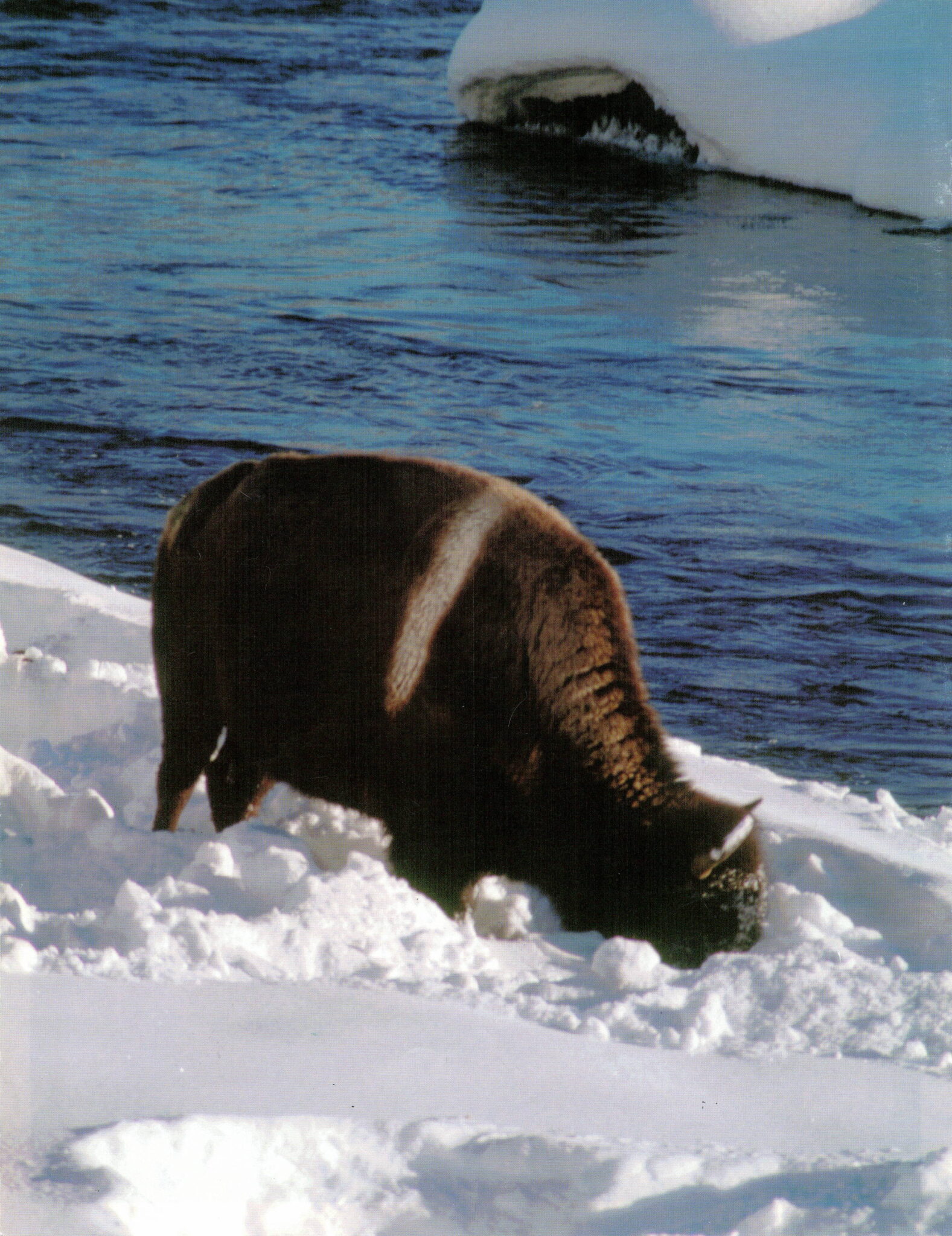
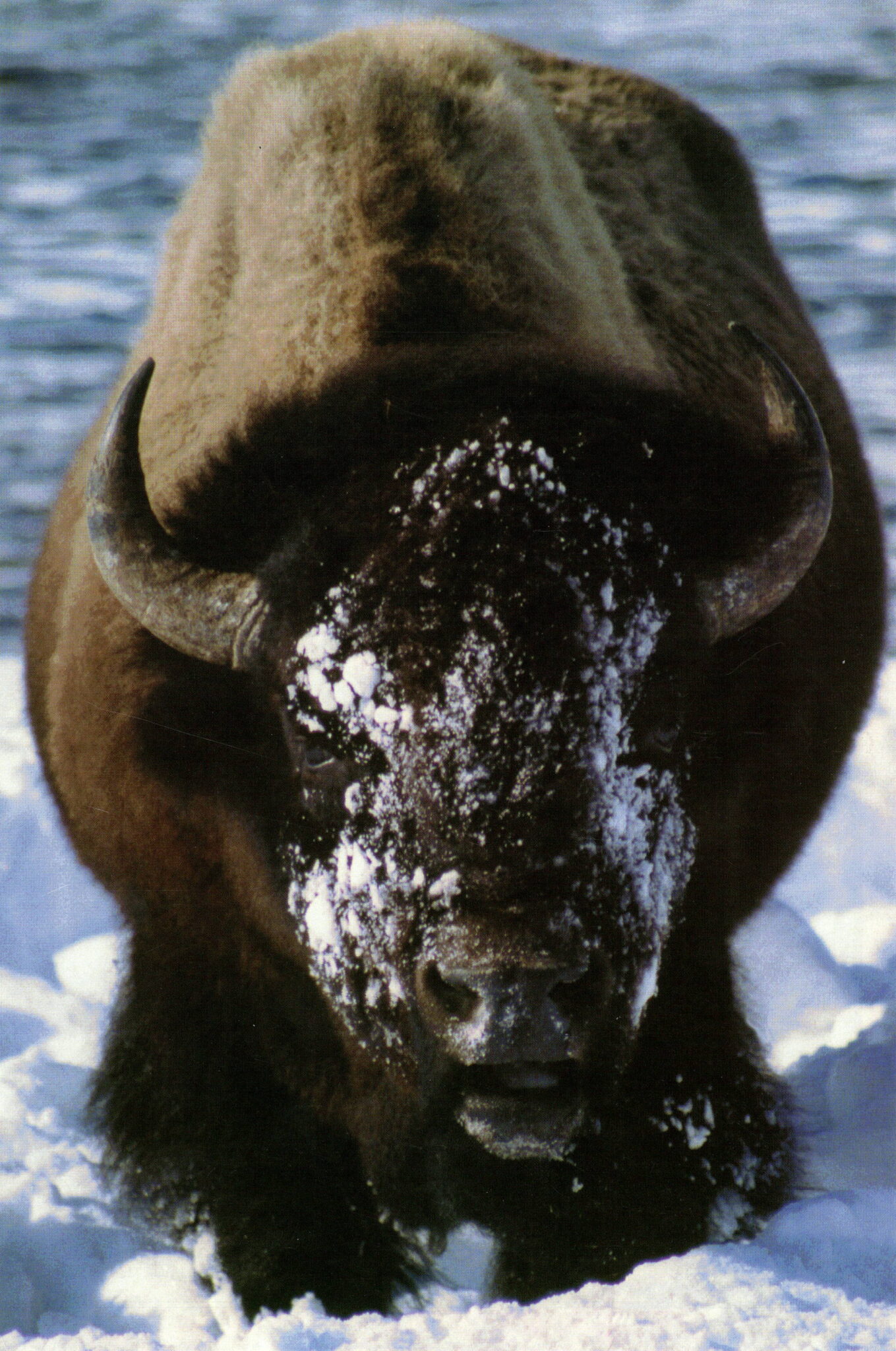
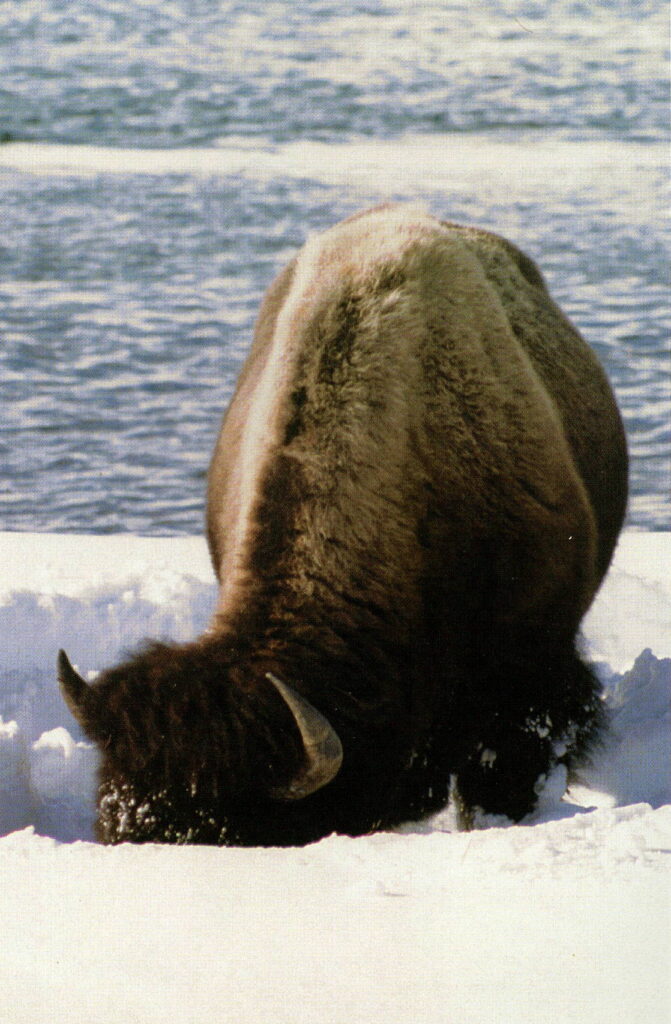
The seasonal movements of these animals differ from those of other large wildlife, such as the deer and elk with which they share some of the same territory. Nature has developed in these animals an ability to survive cold, harsh weather and deep snows. As a result their normal migration is less extensive. The amount and quality of feed are more a factor in their movements than is the depth of the snows covering their sustenance or the weather conditions. The advantage buffalo have over deer and elk, which also have cloved hooves, is they do not use their hooves to try to paw through the deep snow to get down to the grasses. Instead, the buffalo uses its massive head by swinging it back and forth, clearing wide swaths until they expose the grass.
In addition, another advantage that has evolved over time is that its metabolism slows during the winter, enabling the buffalo to survive the winters on the open plains where feed is scarce and weather is often severe. During snowstorms buffalo do not bunch up or try to move away from the weather conditions. They will just lie down and wait out the storm. After a night of heavy snows they appear to be just another drift only to get up, shake it off, and go back to feeding.
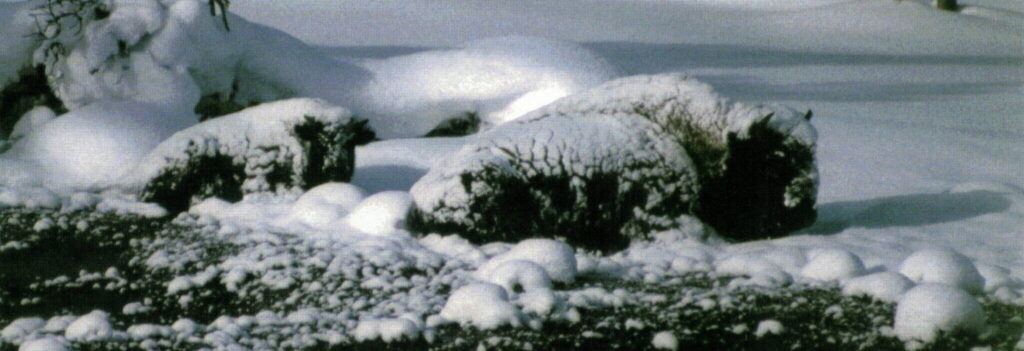
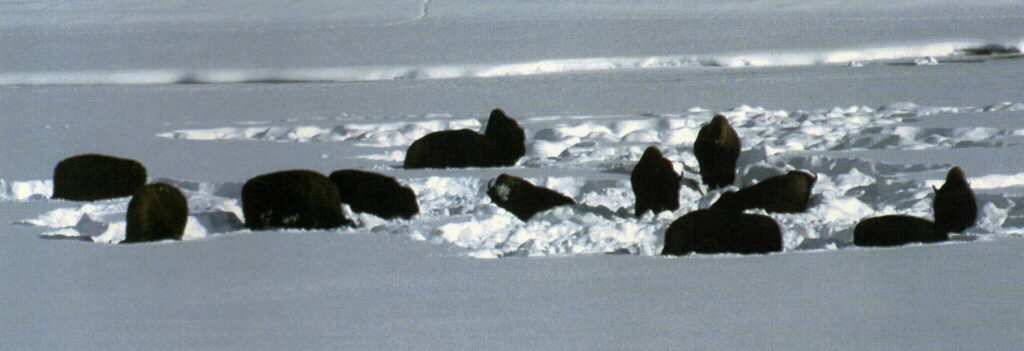
An interesting fact about the bison’s story is that it isn’t just prehistoric, the greatest chapter has taken place in the past 300 years. The entire species was almost totally eliminated from this continent barely 100 years ago when millions of North American bison were reduced to a couple of hundred head in an amazingly short period of time. To lose this magnificent animal would have been a national disgrace. But, despite the massive effort supported by the military and government to do just that, a few concerned individuals succeeded in saving the last remaining remnants of the species.
St. Stephens Indian Mission Foundation is a non-profit organization, incorporated under the laws of the State of Wyoming on March 31, 1974, and listed on page 184 of the 1993 OFFICIAL CATHOLIC DIRECTORY. The sole purpose of the foundation is “to extend financial support to St. Stephens Indian Mission and its various religious, charitable and educational programs and other services conducted primarily for the benefit of the Northern Arapaho and Eastern Shoshone Tribes on the Wind River Indian Reservation.”
